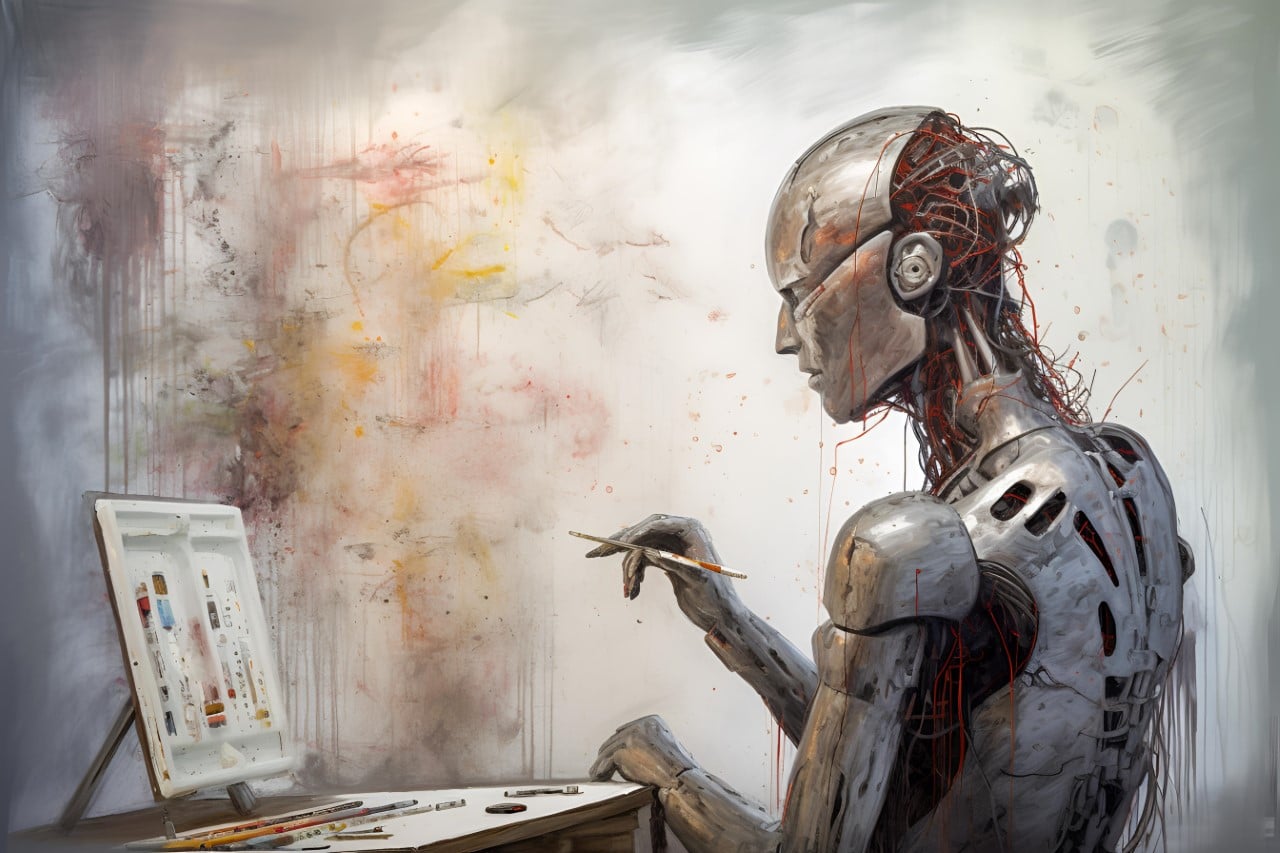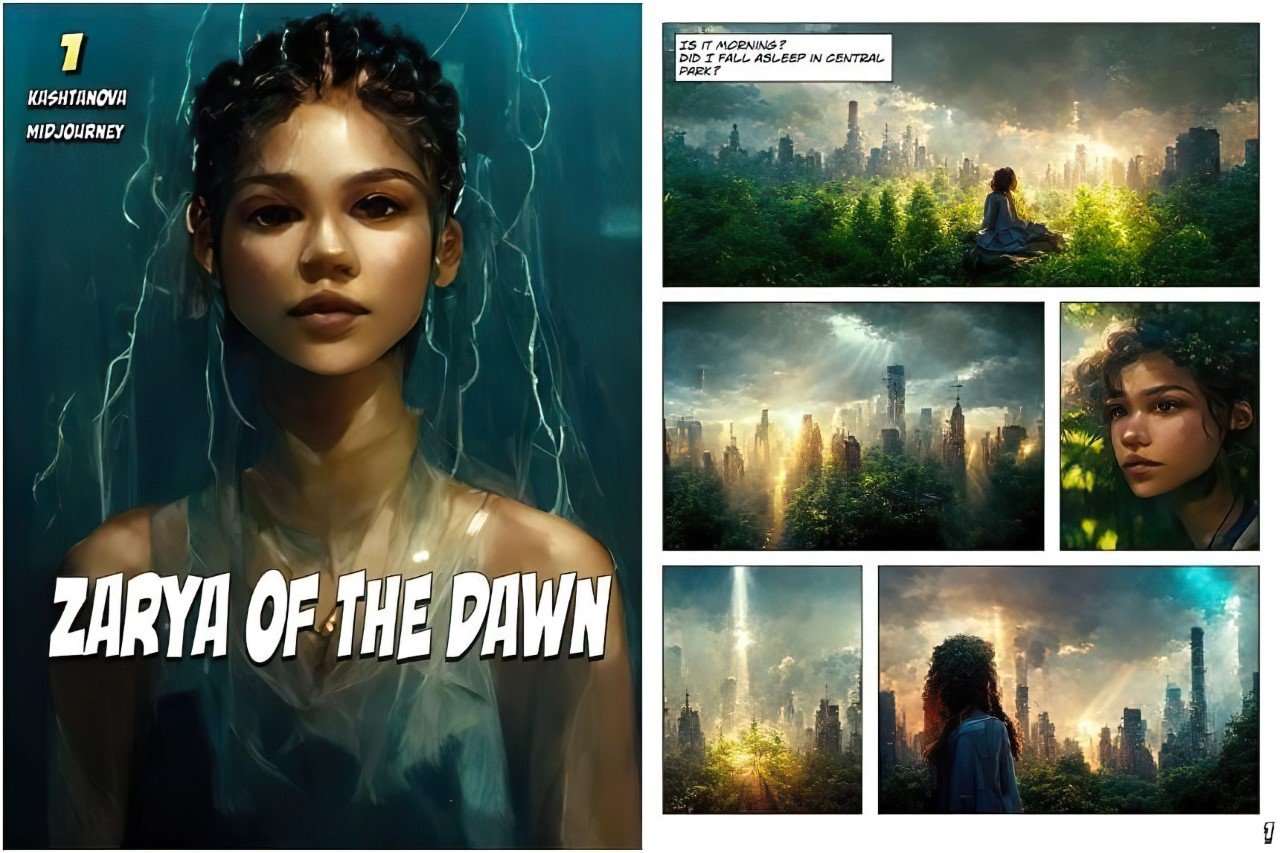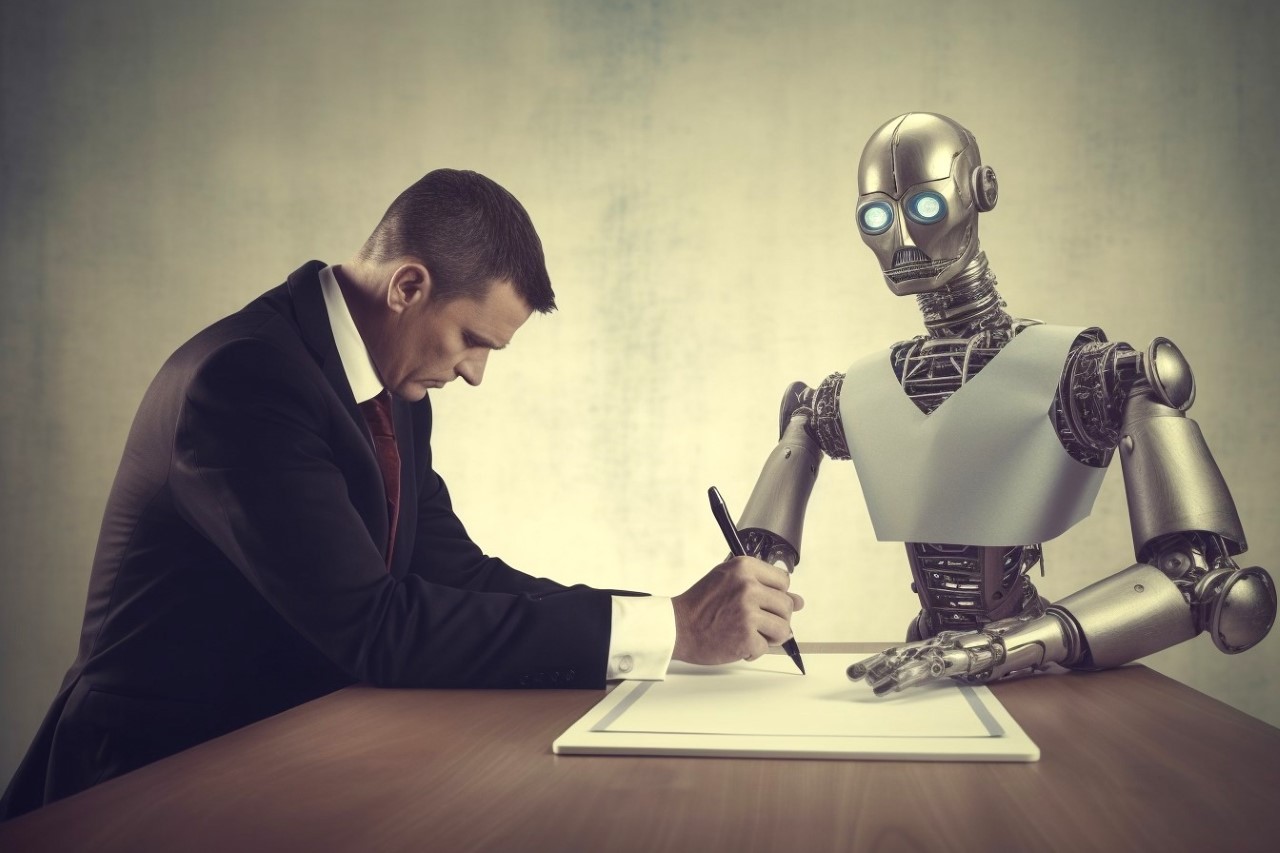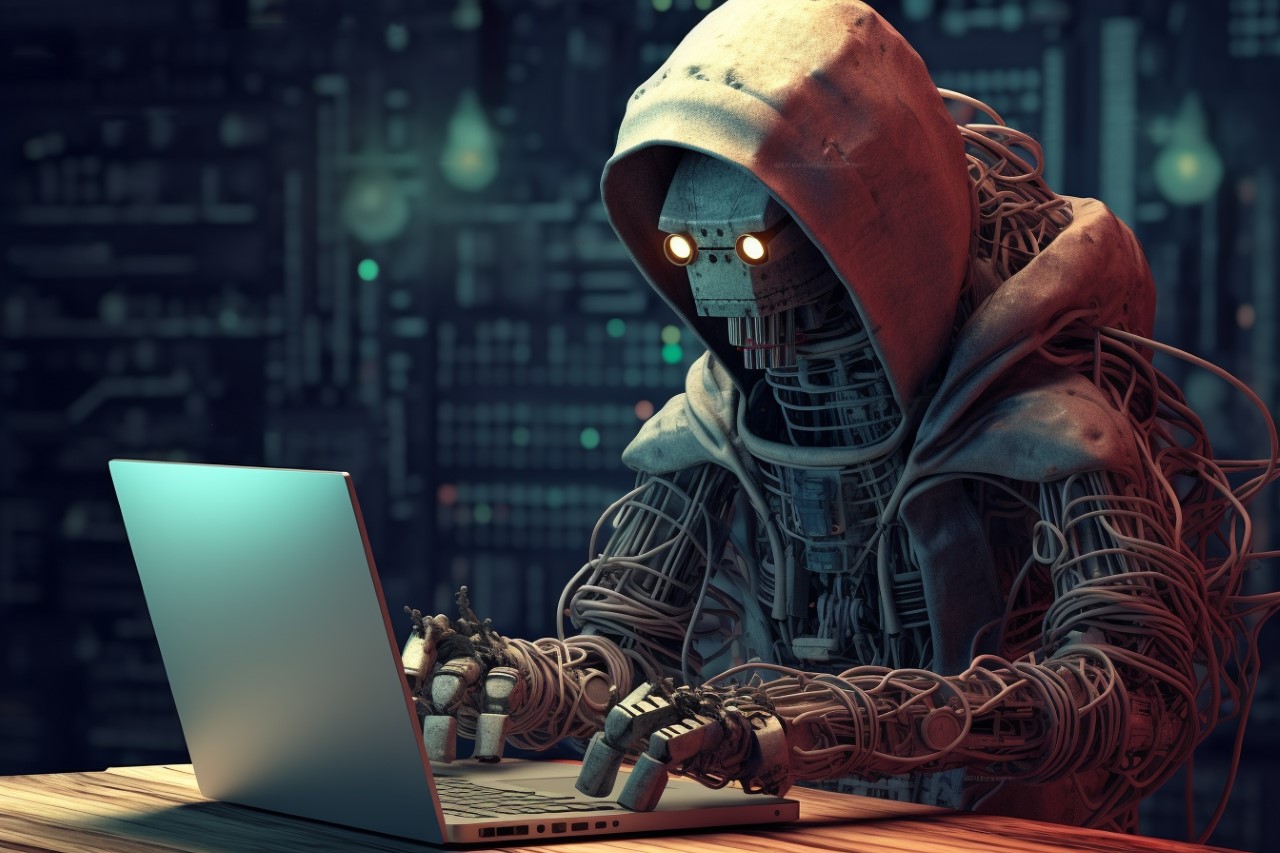
Disclaimer – This article was written considering current United States intellectual property laws as of May 2023. If you’re interested in knowing more about your country’s IP laws and view on AI, I recommend consulting a lawyer or doing some research online.
Little did Mark Zuckerberg know back in October of 2021, that the future wasn’t, in fact, the metaverse. Just months after he rebranded his entire company as Meta, putting all his bets on a virtual universe, something completely shook the foundations of that reality. OpenAI and StabilityAI both debuted their text-to-image AI art models, allowing pretty much anyone to create stunningly realistic images with just a simple text prompt. Stable Diffusion, Dall-E 2, and MidJourney suddenly became all the rage, completely creating new professions and destroying existing ones overnight. If that wasn’t enough, on roughly the 1-year anniversary of Meta’s rebrand, OpenAI unveiled ChatGPT, the all-powerful AI chatbot that even had legacy companies like Google wetting the bed.
It’s now difficult to imagine a world before AI tools, and there’s obviously no going back to those days now that this Pandora’s box has been opened. The world’s changed so much in the past few months, as people have used AI-based tools to become artists, writers, coders, etc. overnight… but there’s a fundamental question to be asked and answered here – When Machines Create, Who Gets To Own It??
When Machines Create, Who Gets To Own It??
This question, like the actual origin of AI-generated content, isn’t new. Machine learning has been around for more than a decade at this point, with computers gaining intelligence through the act of data-gathering, parsing, ‘thinking’, and ‘creating’. As early as 1996, Deep Blue defeated grandmaster Garry Kasparov in a game of chess – a first for any computer. Then in 2011, IBM’s Watson supercomputer beat humans in a game of Jeopardy; and in 2015, AlphaGo beat European Go champion Fan Hui with a score of 5 to 0. Is it safe to say that computers defeated their human counterparts? Or that the engineers who created the computers were the actual victors? What about when a self-driving Tesla kills a pedestrian? Does the blame go to the AI? Or the human behind the wheel? Or Tesla’s team of engineers who built the self-driving algorithm? We’re still figuring out the answers to all those nuanced questions, although Tesla’s terms and conditions clearly outline that the company isn’t liable for anything its self-driving AI does. The liability falls upon the driver, who probably scrolled right past the terms and conditions to click on the ‘Accept’ button.
Needless to say, AI-generated accidents and AI-generated artworks are viewed differently under the law. As far as art goes, be it a video, an image, a script, a song, or any medium that the AI can work with, the (US) law is pretty straightforward – According to copyright law, only humans can be granted copyrights. If it’s created by AI, nobody can claim ownership of it or copyright it.
Interestingly enough, in 2018, the USPTO (United States Patent and Trademark Office) denied copyright to AI expert Dr. Steven Thaler for his AI-generated artwork titled “A Recent Entrance to Paradise”. Why? The examiner found no human authorship. According to the Office: “…The work could not be registered because it was made ‘without any creative contribution from a human actor.’” However, in February of 2023, graphic-novel artist Kris Kashtanova was granted copyright for their AI-generated comic book “Zarya of the Dawn” for the simple reason that there was human input in creating the entire comic book and its underlying storyline. The entire comic book was “AI-assisted” and not “AI-generated”, which is why it was eligible for copyright. The individual AI-generated images within the comic book, however, were not subject to copyright.

Zarya Of The Dawn – The first “AI-assisted” comic book to be granted Copyright
What does ‘Ownership’ even mean?
The law interprets ownership a little differently than humans do. On an interpersonal level, ownership is simple. If something belongs to me through purchase, I own it – like my phone, my watch, my shoes. The ownership is limited as a matter of speaking because even though I own my phone, I can’t repair it, modify it, or hack it without breaking certain rules, but that’s for a different discussion entirely. If something belongs to me through creation, on an interpersonal level, it’s pretty clear-cut too. I made it, it’s mine. The law, on the other hand, has three broad ways of ascribing ownership through creation – Trademark, Patent, and Copyright. Here’s how they work.
Trademark – Protects branding elements, such as names, logos, and slogans, that are used to identify a specific company or product. For example, Apple’s logo is a registered trademark that identifies the company’s products and services.
Patent – Protects new and useful inventions or discoveries, such as a new technologies or overall design. Apple has numerous patents for its various technological innovations, such as the iPhone’s multi-touch interface, and even on designs themselves, like the actual design of the iPhone.
Copyright – Protects original works of authorship, such as books, music, artwork, and even written source code/algorithms. For example, Apple owns the copyright to the software used in its products, such as the iOS operating system used in the iPhone and iPad. This means that no one else can legally copy or distribute Apple’s software without their permission.
*Patent and Trademark Offices are incredibly critical of AI being used even in documentation. Remember Dr. Stephen Thaler from earlier? Dr. Thaler developed an AI system called DABUS that could write patent applications. However, the USPTO rejected all patent applications on the grounds that they weren’t written by a human, with even the Supreme Court ruling in their favor.
In short, you could copyright an AI that you built on your own… but you can’t copyright the work generated by the AI unless there’s human effort involved in the work itself. There is, however, one small catch that most people tend to overlook… and it’s often written in the fine print of the Terms and Conditions that we agree to all too eagerly. Do companies like MidJourney, OpenAI, Google, Microsoft, and Stability.AI have rights/access to the work created by us using their AI programs?

Does Midjourney or ChatGPT fully or partly own my work?
I’m guessing you didn’t think about that while accepting the terms and conditions. Here’s the hilarious bit. I didn’t too, and companies often bank on this ignorance. In 2012, Bruce Willis almost considered suing Apple because he realized that all the music he paid for on iTunes didn’t “belong” to him. In short, he couldn’t download it, listen to it outside Apple’s ecosystem, or gift it to his children. Even though he PAID for the music, he didn’t actually pay for the music. He paid for the ‘privilege’ of being able to listen to it… a fact he would have known if he had read the iTunes Terms and Conditions.
With programs like Midjourney, ChatGPT, DALL·E, and Stable Diffusion, the answer to the question really depends from program to program and company to company. Here’s what the Terms of Service are for all common AI programs/bots. Be ready for a lot of legal speak. There’s a TL;DR version down below in case you just want the summary, and do note – these terms and conditions are subject to change at any point in time.
- Midjourney – The company states that “You own all Assets You create with the Services, to the extent possible under current law. This excludes upscaling the images of others, which images remain owned by the original Asset creators.” You retain ownership of the assets even if you cancel your membership, but there are two caveats. The first – By using the Services, you grant Midjourney a perpetual, worldwide, non-exclusive, royalty-free license to reproduce, prepare derivative works of, publicly display, perform, sublicense, and distribute any text or image prompts you input into the Services or assets produced by the service at your direction. Secondly, your ownership of assets is subject to additional terms if you’re an employee or owner of a company that makes more than $1 million USD a year in gross revenue, and you’re using the service on behalf of the company. If that’s true, you only own the assets under Midjourney’s Pro tier. If you are not a Paid Member, you don’t own the assets you create. Instead, Midjourney grants you a license to the assets under the Creative Commons Noncommercial 4.0 Attribution International License (the “Asset License”). Read Midjourney’s entire Terms of Service here.
- Dall·E2 – Created by OpenAI (the same folks behind ChatGPT), Dall·E2 had incredibly strict terms up until July of 2022. The company watermarked each image with five colored swatches at the bottom right, and OpenAI was incredibly strict in enforcing the fact that the generated images DO NOT belong to you and are not meant to be treated otherwise. It wasn’t up until July 2022 that they relaxed their policies, allowing creators to commercialize their creations by selling their AI-generated art… OpenAI grants you rights to the images you create using DALL·E2, however, your prompts and artworks may be used by OpenAI to improve and maintain their services. This is also the case with ChatGPT. Read ahead to know what OpenAI says broadly in their Terms of Use across all their products.
- ChatGPT – OpenAI looks at data through two lenses – Input and Output. You may provide input to the Services (“Input”), and receive output generated and returned by the Services based on the Input (“Output”). Input and Output are collectively “Content.” The Input you provide wholly belongs to you, as does the output, with a few disclaimers. OpenAI hereby assigns to you all its right, title and interest in and to Output. This means you can use Content for any purpose, including commercial purposes such as sale or publication, if you comply with these Terms. OpenAI may use Content to provide and maintain the Services, comply with applicable law, and enforce our policies. You are responsible for Content, including for ensuring that it does not violate any applicable law or these Terms… which loosely translates to ‘with great power comes great responsibility’. OpenAI does not hold itself responsible for any input or output that violates its terms, or the law. Read OpenAI’s entire Terms of Use here.
- Stable Diffusion – This one’s tricky, given that Stable Diffusion is open-source and multiple companies/services are using its technology. However, with their proprietary DreamStudio AI program, StabilityAI (the company) mentions that “you own the Content that you generate using the Services to the extent permitted by applicable law.” However, given that the AI bot accepts images as input too, StabilityAI holds you responsible for ‘owning’ the images you upload onto its service, including copyrights and rights of publicity. You are responsible for the content and ensuring that it does not violate any laws or intellectual property rights. Stability and its affiliates may use the content to improve the Services and store it in a “history” section of your account for easy retrieval. Read the DreamStudio Terms of Service here.
TL;DR – All programs give you some form of right to ownership (this isn’t a copyright) to the work you create, but at the same time, they also give themselves permission to use your prompts and the resulting output in any way they choose. So be incredibly careful of the material you feed into these AI programs – especially make sure nothing you share with them is confidential or intellectual property that doesn’t belong to you.

Can someone steal my work if it’s not copyrighted?
Funnily enough, even though you’re given the right to ownership with these AI ‘generations’, the court of law doesn’t recognize it in a way that’s legally enforceable. So yes, you own the works you create, as long as you can keep them a secret and prevent them from being copied/stolen. The second you put your un-copyrighted works up in the public domain, anyone can pretty much copy it all. Your only respite in that regard, is the court of public opinion… unless there’s human intervention involved, in which case your work is eligible to be protected by copyright. The inverse is true too. You can ‘steal’ someone else’s work and modify it to an extent where the law considers it ‘your own creation’. It’s what musicians do with ‘sampling’ too, although many songs have been taken to court over possible plagiarism.
If I can’t copyright my AI-generated work? What can I do with it?
To be brutally honest, trying to copyright AI work is like trying to copyright a Starbucks order because you told the barista what you want. If all you provided were instructions, you shouldn’t be claiming any sort of credit for what the AI created… even if the basic framework of an idea belonged to you. You can, however, build on what the AI creates, treating it as a collaboration… and honestly, that’s what AI tools are all about. AI isn’t meant to replace humans, it’s meant to give humans new skills to create better work faster. It’s a means to an end, just the way Photoshop and AutoCAD replaced their manual counterparts.
To summarize, here’s the question we asked at the beginning – When Machines Create, Who Gets To Own It? Well, if the machine created it based on data from the entire internet, then the entire internet collectively has a right to access it or be inspired by it. When humans create work, they’re inspired by other work. When AI creates work, it’s merely sampling and remixing things in its dataset. So if you really want to be different, and if you really want to claim work that belongs to you, give it your own, distinct human touch!
All images in this article were created using Midjourney
The post Who Owns AI-Generated Content? Understanding Ownership, Copyrighting, and How the Law interprets AI-generated Art first appeared on Yanko Design.
0 Commentaires